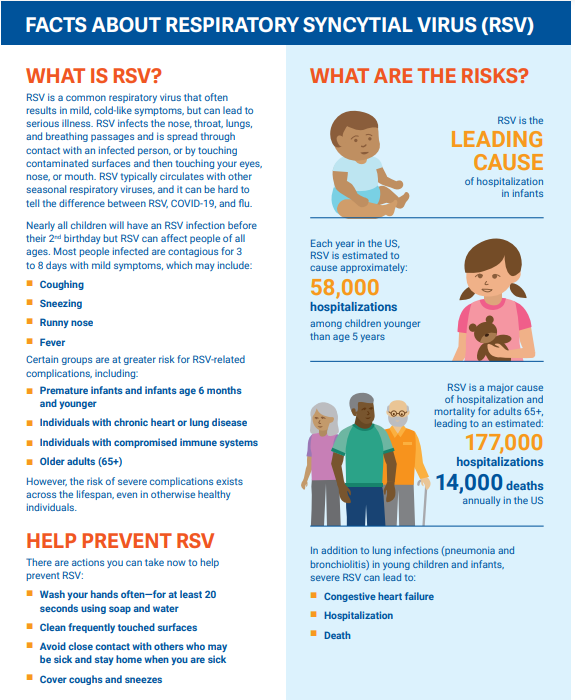ForumIAS announcing GS Foundation Program for UPSC CSE 2025-26 from 27th May. Click Here for more information.
What is the News?
According to a Lancet study, Lower respiratory infection attributable to the respiratory syncytial virus (RSV) was responsible for more than 1,00,000 deaths in children under five worldwide in 2019.
What are the key findings of the study?
In 2019, there were 3.3 crores of RSV-associated acute lower respiratory infection episodes in children under five years old. Further, RSV accounts for 2% of annual deaths from any cause in this age range.
Globally, only 26% of RSV-associated deaths occur in a hospital. Overall, 97% of RSV deaths in children under five occurred in low- and middle-income countries. The incidence rate in India is 53 per 1,000 children per year (5.3%).
What is a respiratory syncytial virus (RSV)?

RSV is the most common cause of acute lower respiratory infection in young children.
Spreading: RSV is a common respiratory virus. It is highly contagious in nature. RSV spreads through contact with respiratory droplets (coughing, sneezing, or kissing) from an infected person.
Symptoms: RSV infects the nose, throat, lungs, and breathing passages. In most of cases, RSV has symptoms like the common cold but in advanced stages, it converts into pneumonia and bronchiolitis.
Vulnerable sections: It commonly infects children especially under 2 to 6 years of age. Children six months and younger are particularly vulnerable.
Vaccination: At present, there is no reliable cure available for RSV infection. But numerous RSV vaccine candidates are in the pipeline.
Source: The post is based on the article “New research: Respiratory syncytial virus and the toll it takes on young children” published in Indian Express on 20th May 2022.




